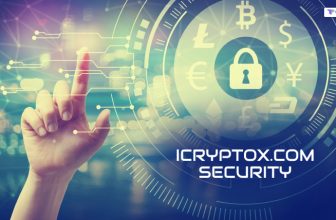
As someone who works in the business arena or runs their own company, it’s helpful to understand some of the basic IT concepts that exist, even if that’s not your specialty. If you comprehend some IT basics, you can talk to an IT specialist who you choose to hire or who you are considering making a part of your team.
To that end, you should know a little about IGA, also called Identity Governance and Administration. We’ll talk about it in this article and explain what it can do.
What Exactly is IGA?

IGA is a comprehensive, policy-based identity management system. Access control is its other aspect. It effectively improves organizational compliance and mitigates various risk factors that your business regularly encounters.
Though IGA is two components in one, it helps to look at them separately if you want to understand how the entire system works. The identity governance part basically means that you’re making sure of someone’s identity before you are allowing them to access your network.
It’s rather obvious why you would want to do that. You don’t want any unauthorized person accessing your network since that individual might be a hacker or someone with dishonest or criminal intentions.
As for identity administration, that refers to the methods you’re using to control what credentials a person might use to access the system. Entitlement management is another way of saying the same essential thing.
Why Combine the Two?
Identity management and access control must link to each other because one should not exist without the other. If someone wants to access your business’s software suite, for example, they shouldn’t be able to do that without proving who they are.
Linking these two concepts, proving one’s identity and access control, has been a part of computing for nearly as long as computers themselves have been around. It makes sense that, as more time has passed, the methodology by which someone proves who they are to access a computer network has become more complex, to the point where biometrics and similar technology play a part.
User Identity Lifecycle Management
The IGA concept is similar to another one, user identity lifecycle management. It’s hard to discuss one without also delving into the other at least a little bit.
User identity lifecycle management refers to the methodology through which you confirm someone’s identity who works for you or who you want to access your network or software suite. Password management will be a part of that, but it’s only the iceberg’s tip.
You also have to talk about provisioning and de-provisioning, highly detailed event logging, access request management, and much more. The IGA tools you use must be in place so you can handle all of this as smoothly and seamlessly as possible.
Why Does IGA Matter So Much?

The first reason why you need IGA for your company’s computer system is obvious: it is to confirm that the people who want to access your network are who they claim to be. However, you also need it for another reason.
The larger your company is, the more people will need to access your network during any given day. You might have a bespoke software suite with dozens, hundreds, or even thousands of people logging in and out, both from a central location and remote locations if you’re allowing remote work.
Think of the system’s complexity if you’re trying to keep track of all these individuals. If you don’t want the system to go down, you need to have it be as streamlined as possible. That is all that separates you from a devastating system crash that can cripple your company for hours or even days.
Therefore, the best IGA setup can confirm a user’s identity and log it in when that person accesses the network, but it will also allow the network to continue operating in the midst of extremely heavy usage. Many companies have attained this, and yours will need to do the same.
There Are Many IGA Options Now

Luckily, we do live in an era where there are several IGA options that companies universally accept as superior. Systems with IGA capabilities are out there, and you can shop around to see which one makes the most sense for your unique business’s requirements. No two companies have the same computer network, so you’ll want to get one that has the right features.
Once you’ve found it, implement it with no delays. That’s how you can keep your network safe.
Read Also:






